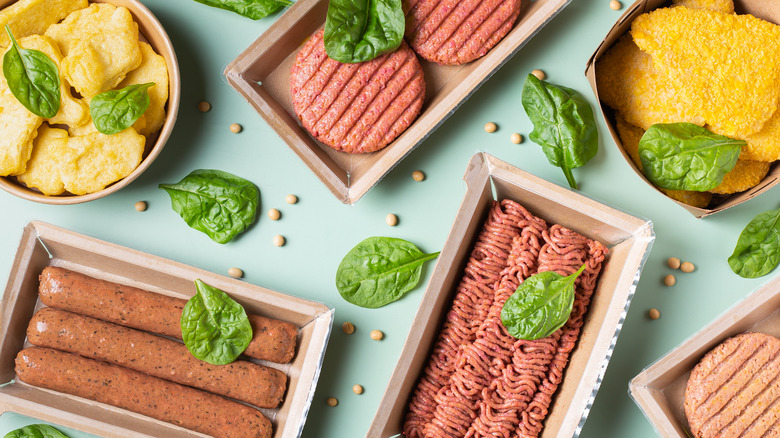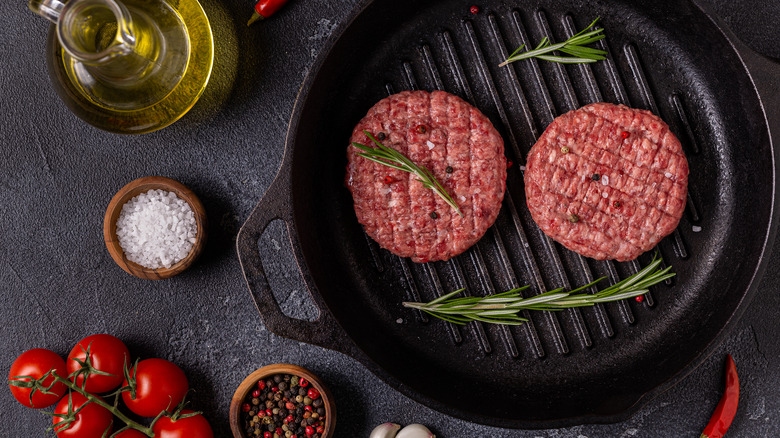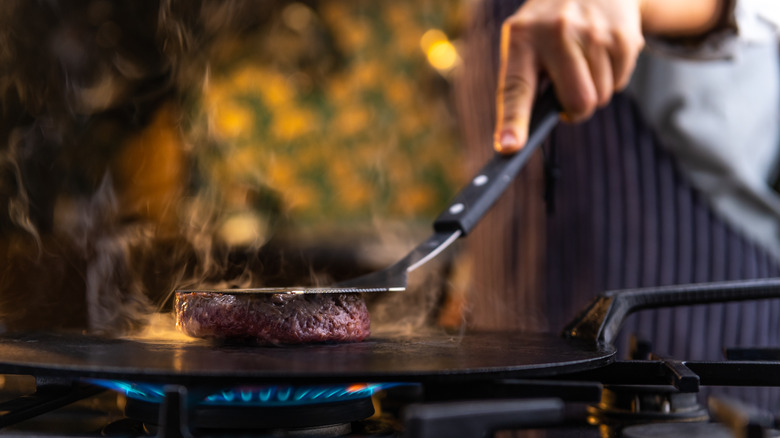For The Best Plant-Based Meat, Pan Choice Matters
We all know different types and cuts of meat have their own cooking methods. This also applies to plant-based meat. In addition to traditional meat alternatives, such as tofu and tempeh, there is now a plethora of plant-based meat alternatives to choose from in grocery stores (via CNET). At the grocery stores, you can now find numerous plant-based meat options, from Impossible Food and Beyond Meat to Aldi's plant-based brand Earth Grown. The plant-based meat industry is expected to further boom at an annual rate of nearly 20% over the next decade, according to Grand View Research. The growing options only add to the confusion over the proper cooking methods for each meatless meat brand.
Though plant-based meat alternatives, like patties, sausages, and ground beef, are meant to replicate their counterparts' texture and taste, their cooking method can't be any more different. Whether you are slinging an Impossible or Beyond patty, having the right pan can make the difference between a juicy burger and a crumbly disaster.
When in doubt, use a non-stick pan
Plant-based meats are typically wetter and more sticky than its counterpart due to their ingredients (via Food & Wine). Impossible patties consist of soy protein and Beyond Burger patties are made from pea and soy proteins. These ingredients make plant-based meat more sticky than real meat. The ingredients in plant-based meats also make them delicate and soft compared to real meat, according to America's Test Kitchen. Because they lack myosin proteins that keep real meat intact, be sure to handle plant-based meat with extra care to avoid crumbling.
According to America's Test Kitchen, plant-based meat is generally best cooked in a non-stick pan if the recipe requires the meat to be flipped or stirred. That's particularly true if you're using Impossible or Beyond products.
The type of plant-based meat also affects the type of pan used, per America's Test Kitchen. Grilling a burger or meatballs on a non-stick skillet will help get a nice, exterior crispy sear. Adding a bit of oil to your non-stick pan won't hurt since it can help further replicate a meat-like texture.
Pair your pan with a metal spatula
For extra protection to keep your plant-based meat from crumbling, avoid using a plastic spatula, especially if you are slinging burger patties. It's best to use a metal spatula — also referred to as a turner– as it is specifically designed for flipping food and has high heat resistance (via MasterClass). According to Food & Wine, using a metal spatula can also help prevent the meat from sticking to its cooking surface and breaking apart.
If you are whipping up a dish that is sauce-heavy, say a chili or shepherd's pie, America's Test Kitchen recommends a stainless steel pan or a skillet as the liquid will naturally prevent the meatless meat from sticking to the pan's surface. If the recipe doesn't call for the plant-based meat "to hold a particular shape," then you're safe with using a stainless steel pan. If you are looking to cook on a grill, America's Test Kitchen suggests in a separate article to grease the grill with oil to prevent sticking. There are many ways to cook plant-based meats, but when in doubt, stick with using a non-stick pan.


